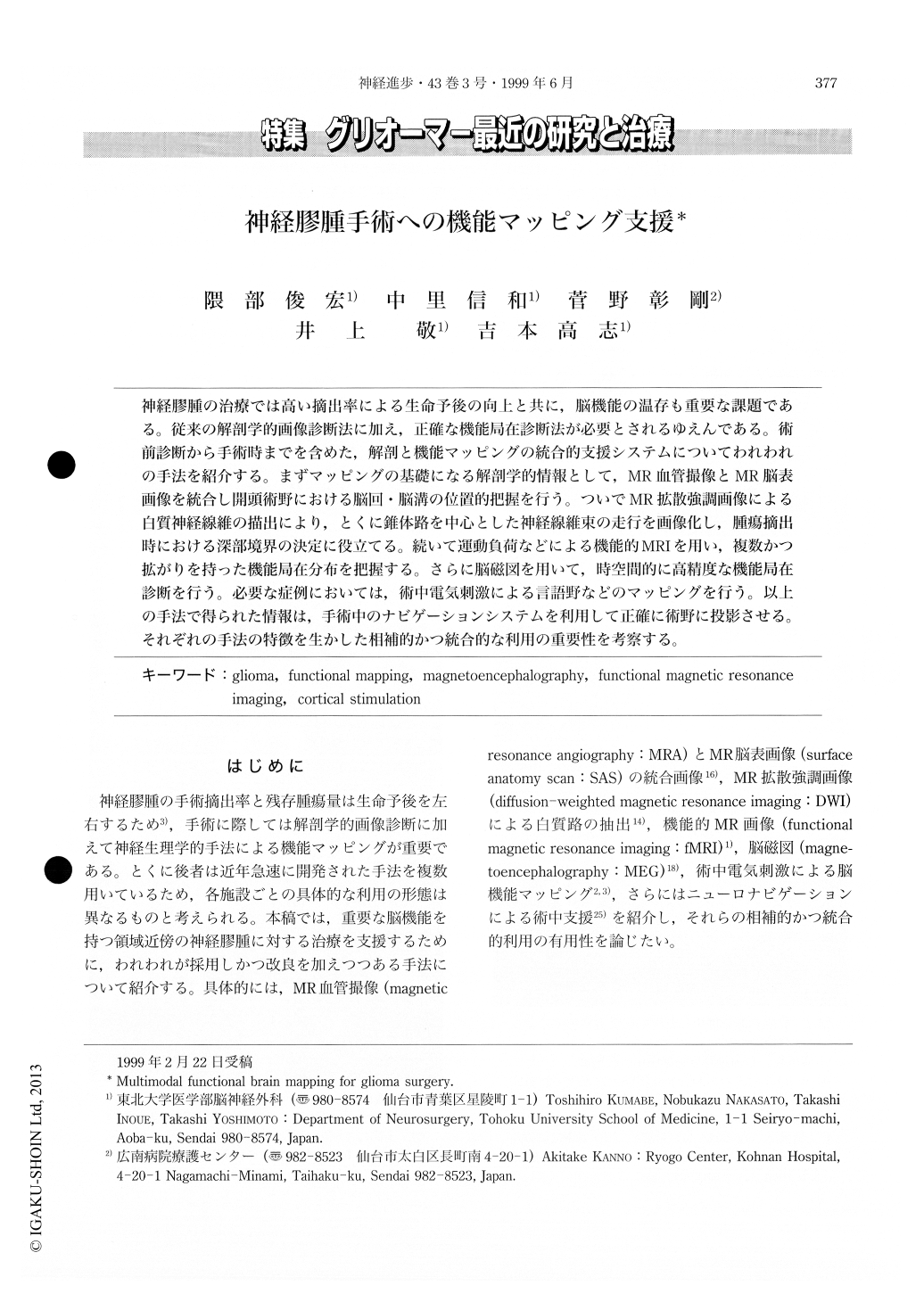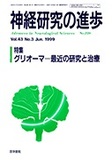Japanese
English
- 有料閲覧
- Abstract 文献概要
- 1ページ目 Look Inside
神経膠腫の治療では高い摘出率による生命予後の向上と共に,脳機能の温存も重要な課題である。従来の解剖学的画像診断法に加え,正確な機能局在診断法が必要とされるゆえんである。術前診断から手術時までを含めた,解剖と機能マッピングの統合的支援システムについてわれわれの手法を紹介する。まずマッピングの基礎になる解剖学的情報として,MR血管撮像とMR脳表画像を統合し開頭術野における脳回・脳溝の位置的把握を行う。ついでMR拡散強調画像による白質神経線維の描出により,とくに錐体路を中心とした神経線維束の走行を画像化し,腫瘍摘出時における深部境界の決定に役立てる。続いて運動負荷などによる機能的MRIを用い,複数かつ拡がりを持った機能局在分布を把握する。さらに脳磁図を用いて,時空間的に高精度な機能局在診断を行う。必要な症例においては,術中電気刺激による言語野などのマッピングを行う。以上の手法で得られた情報は,手術中のナビゲーションシステムを利用して正確に術野に投影させる。それぞれの手法の特徴を生かした相補的かつ統合的な利用の重要性を考察する。
Improvement of the prognosis for patients with glioma requires the achievement of greater extent of resection and less residual tumor. Extended surgical resection of glioma with preservation of essential brain function may be possible using multimodal imaging techniques for anatomy and function. Integration of magnetic resonance (MR) angiography and surface anatomical MR imaging can provide preoperative views of the sulci, gyri, cortical veins and lesions in the operative field. Diffusion-weighted MR imaging can show the position and orientation of subcortical fibers including the pyramidal tract for reference in deep subcortical resection. Functional MR imaging provides extended and multiple activation images of the motor and other eloquent cortices. Magnetoen-cephalography can localize somatosensory, auditory and visual functions with pinpoint accuracy in time and space. Intraoperative cortical stimulation can also localize language, motor and sensory cortices. Neuronavigation systems are useful to project all the functional and anatomical information into the surgical field. We emphasize the complimentary usefulness and combination utility of these methods.

Copyright © 1999, Igaku-Shoin Ltd. All rights reserved.


